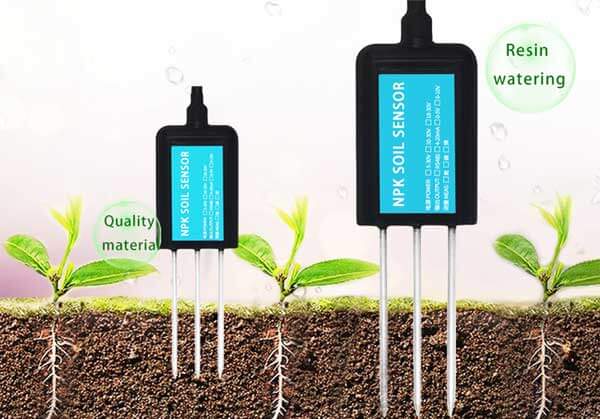Agriculture is an essential sector for the global economy and population. The world’s food demand is projected to double by 2050, requiring innovative ways of agricultural production. Precision agriculture, also known as smart farming, is one such innovation that aims to enhance crop growth while reducing input costs and environmental impact. Soil sensor integration is a crucial component of precision agriculture, enabling farmers to monitor soil conditions in real-time and make informed decisions regarding crop management. This article explores the significance of soil sensor integration in smart farming and its potential applications for enhancing crop growth.

Importance of Soil Monitoring:
Soil quality plays a crucial role in crop growth and yield. The soil’s physical, chemical, and biological characteristics affect water and nutrient availability, root growth, and overall plant health. Monitoring soil conditions regularly is essential for the following reasons:
a) Yield Optimization:
Optimal soil conditions promote healthy plant growth and boost crop yields. Monitoring soil conditions allows farmers to adjust inputs such as irrigation and fertilizer application, ensuring optimal plant growth.
b) Resource Conservation: Overuse of resources such as water and fertilizers can lead to environmental degradation and crop losses. Monitoring soil conditions enables precise resource management, reducing waste and environmental impact.
c) Cost Reduction: Efficient use of resources reduces input costs, increasing profitability for farmers.
Soil Sensor Integration in Smart Farming:
Soil sensors are devices that measure various soil properties, such as moisture content, temperature, and nutrient levels. Soil sensor integration is a crucial component of smart farming, enabling farmers to collect real-time data on soil conditions and make informed decisions regarding crop management. Soil sensor integration offers several advantages in enhancing crop growth:
a) Real-time Monitoring: Soil sensors provide real-time data on soil conditions, allowing farmers to make timely decisions regarding irrigation, fertilization, and other management practices.
b) Precision Management: Soil sensors enable precise resource management, reducing waste and cost while improving crop growth and yield.
c) Early Detection of Issues: Soil sensors can detect potential issues such as nutrient deficiencies or soil compaction, allowing farmers to address them proactively before they affect crop growth and yield.
d) Data-driven Decision Making: Soil sensor data provides insights into soil conditions, enabling farmers to make informed decisions regarding crop selection, irrigation, and fertilization.
Applications of Soil Sensor Integration:
Soil sensor integration finds various applications in smart farming:
a) Irrigation Management: Soil moisture sensors measure soil moisture levels, enabling farmers to adjust irrigation schedules and amounts based on plant water needs, reducing water usage and crop losses due to over or under-watering.
b) Nutrient Management: Soil nutrient sensors measure soil nutrient levels, allowing farmers to apply fertilizers precisely based on plant nutrient needs, reducing fertilizer waste and environmental impact while promoting healthy plant growth.
c) Crop Selection: Soil sensors provide insights into soil conditions, enabling farmers to select crops that are best suited for their specific soil type and conditions, maximizing crop yields and profitability.
d) Disease Prevention: Soil sensors can detect changes in soil conditions that may indicate disease outbreaks, allowing farmers to take preventive measures before the disease spreads and affects crop growth and yield.
Future Perspectives:
The field of smart farming is continuously evolving, driven by advancements in sensor technology, data analytics, and artificial intelligence. Future developments may include:
a) Integration with Other Sensors: Integrating soil sensors with other sensors such as weather stations and aerial drones can provide a comprehensive view of environmental conditions, enabling farmers to make informed decisions based on holistic data.
b) Machine Learning and Predictive Analytics: Advanced data analytics techniques such as machine learning and predictive analytics can use soil sensor data to predict crop growth and yield, enabling farmers to optimize management practices for optimal outcomes.
c) Autonomous Farming: Autonomous farming systems can use soil sensors to collect data and make decisions regarding crop management, reducing labor costs and increasing efficiency.

Conclusion:
Soil sensor integration is a crucial component of smart farming, enabling farmers to monitor soil conditions in real-time and make informed decisions regarding crop management. Soil sensor integration offers several advantages in enhancing crop growth, including precision management, early detection of issues, and data-driven decision making. As technology advances, the integration of soil sensors with other sensors and advanced data analytics techniques will play a significant role in optimizing crop growth, reducing input costs and environmental impact, and promoting sustainable agriculture.
